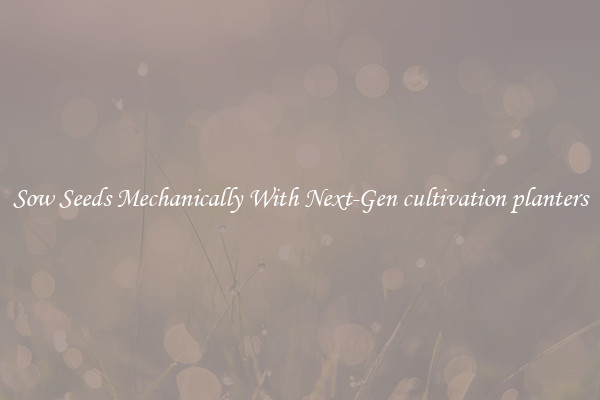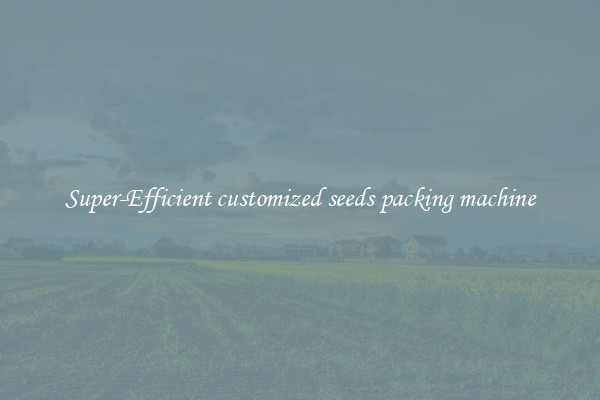Sow Seeds Mechanically With Next-Gen cultivation planters
Sow Seeds Mechanically With Next-Gen Cultivation Planters

In the ever-evolving world of agriculture, farmers are constantly searching for innovative techniques and tools to increase efficiency and productivity. One area that has seen significant advancements in recent years is the process of sowing seeds. Gone are the days of manually planting seeds one by one; now, farmers can sow seeds mechanically with the help of next-gen cultivation planters.
These next-generation cultivation planters are a game-changer for farmers. By automating the seed sowing process, these machines save time, energy, and labor costs. With the ability to sow seeds at a much faster rate than by hand, farmers can cover larger areas in a shorter amount of time. This not only boosts productivity but also allows farmers to take full advantage of the optimal planting window and maximize yield potential.
Additionally, using mechanical planters eliminates the risk of uneven seed spacing. Accurate and precise seed placement is crucial for proper germination and crop growth. Traditional hand planting methods often result in inconsistent seed distribution, leading to uneven crop emergence and reduced yields. However, next-gen cultivation planters ensure uniform seed spacing, resulting in more uniform crop growth and higher yields.
Furthermore, these mechanical planters come equipped with advanced features that enhance planting accuracy and efficiency. Some models are equipped with GPS technology, which allows for precise navigation and row spacing. By integrating GPS with seed placement, farmers can ensure that their crops are planted in straight rows, minimizing the risk of overlap or missed areas. This level of accuracy not only saves seeds but also helps in weed control and reduces the need for herbicides.
In addition to increased efficiency and accuracy, next-gen cultivation planters are designed with sustainability in mind. Many mechanical planters are now equipped with technologies that reduce soil disturbance, prevent erosion, and minimize nutrient runoff. By incorporating conservation practices into the design, these planters contribute to the overall sustainability of farming operations.
Lastly, the use of mechanical planters minimizes the physical strain often associated with manual seed sowing, enhancing farmer comfort and safety. With ergonomic designs and automated functions, these machines reduce the risk of injury and fatigue, allowing farmers to work more efficiently and comfortably.
In conclusion, next-gen cultivation planters have revolutionized the way farmers sow seeds. By automating the process, these machines increase efficiency and accuracy, leading to higher yields and reduced labor costs. They also contribute to sustainability efforts by minimizing soil disturbance and nutrient runoff. As technology continues to advance, the future of agriculture looks promising with the integration of more innovative tools and techniques.

View details

View details

View details

View details





